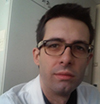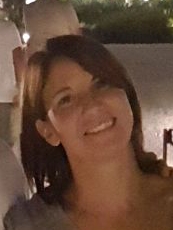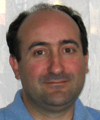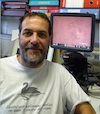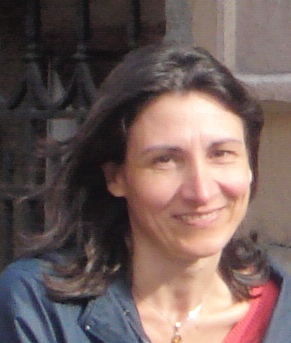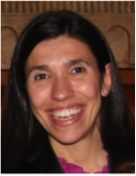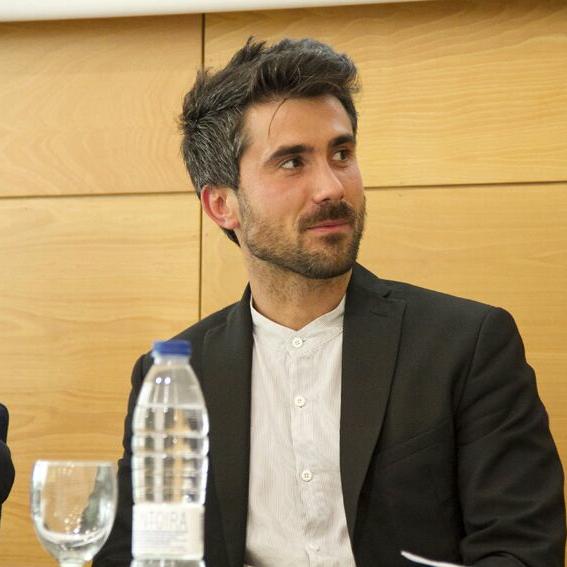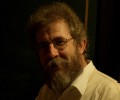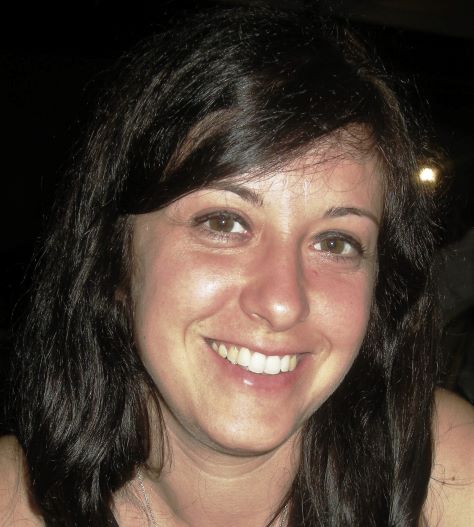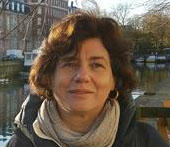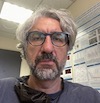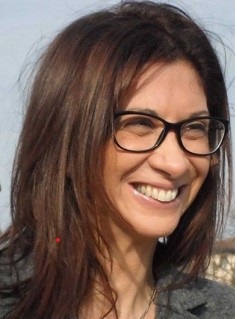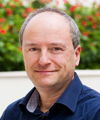Studying at the University of Verona
Here you can find information on the organisational aspects of the Programme, lecture timetables, learning activities and useful contact details for your time at the University, from enrolment to graduation.
Academic calendar
The academic calendar shows the deadlines and scheduled events that are relevant to students, teaching and technical-administrative staff of the University. Public holidays and University closures are also indicated. The academic year normally begins on 1 October each year and ends on 30 September of the following year.
Course calendar
The Academic Calendar sets out the degree programme lecture and exam timetables, as well as the relevant university closure dates..
| Period | From | To |
|---|---|---|
| I sem. | Oct 3, 2016 | Jan 31, 2017 |
| II sem. | Mar 1, 2017 | Jun 9, 2017 |
| Session | From | To |
|---|---|---|
| Sessione invernale Appelli d'esame | Feb 1, 2017 | Feb 28, 2017 |
| Sessione estiva Appelli d'esame | Jun 12, 2017 | Jul 31, 2017 |
| Sessione autunnale Appelli d'esame | Sep 1, 2017 | Sep 29, 2017 |
| Session | From | To |
|---|---|---|
| Sessione estiva Appelli di Laurea | Jul 12, 2017 | Jul 12, 2017 |
| Sessione autunnale Appelli di laurea | Nov 21, 2017 | Nov 21, 2017 |
| Sessione invernale Appelli di laurea | Mar 13, 2018 | Mar 13, 2018 |
| Period | From | To |
|---|---|---|
| Festa di Ognissanti | Nov 1, 2016 | Nov 1, 2016 |
| Festa dell'Immacolata Concezione | Dec 8, 2016 | Dec 8, 2016 |
| Vacanze di Natale | Dec 23, 2016 | Jan 8, 2017 |
| Vacanze di Pasqua | Apr 14, 2017 | Apr 18, 2017 |
| Anniversario della Liberazione | Apr 25, 2017 | Apr 25, 2017 |
| Festa del Lavoro | May 1, 2017 | May 1, 2017 |
| Festa della Repubblica | Jun 2, 2017 | Jun 2, 2017 |
| Vacanze estive | Aug 8, 2017 | Aug 20, 2017 |
Exam calendar
Exam dates and rounds are managed by the relevant Science and Engineering Teaching and Student Services Unit.
To view all the exam sessions available, please use the Exam dashboard on ESSE3.
If you forgot your login details or have problems logging in, please contact the relevant IT HelpDesk, or check the login details recovery web page.
Should you have any doubts or questions, please check the Enrollment FAQs
Academic staff
Ugolini Simone
 simone.ugolini@univr.it
simone.ugolini@univr.it
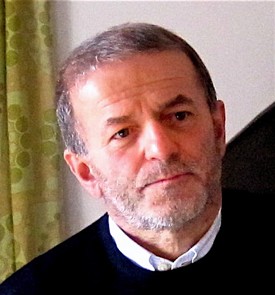
Vallini Giovanni
 giovanni.vallini@univr.it
giovanni.vallini@univr.it
 045 802 7098; studio dottorandi: 045 802 7095
045 802 7098; studio dottorandi: 045 802 7095
Study Plan
The Study Plan includes all modules, teaching and learning activities that each student will need to undertake during their time at the University.
Please select your Study Plan based on your enrollment year.
1° Year
| Modules | Credits | TAF | SSD |
|---|
2° Year activated in the A.Y. 2017/2018
| Modules | Credits | TAF | SSD |
|---|
3° Year activated in the A.Y. 2018/2019
| Modules | Credits | TAF | SSD |
|---|
One course to be chosen among the following:One course to be chosen among the following:| Modules | Credits | TAF | SSD |
|---|
| Modules | Credits | TAF | SSD |
|---|
| Modules | Credits | TAF | SSD |
|---|
One course to be chosen among the following:One course to be chosen among the following:Legend | Type of training activity (TTA)
TAF (Type of Educational Activity) All courses and activities are classified into different types of educational activities, indicated by a letter.
Molecular biology (2017/2018)
Teaching code
4S00800
Credits
12
Language
Italian
Scientific Disciplinary Sector (SSD)
BIO/11 - MOLECULAR BIOLOGY
The teaching is organized as follows:
teoria
laboratorio [1° turno]
laboratorio [2° turno]
Learning outcomes
The aim of this course is to give the students the basic knowledge of the molecular mechanisms concerning transmission, variation and expression of the genetic information.
At the end of the course the students will be able to recognize the major molecular mechanisms of life in prokaryotic and eukaryotic cells.
Program
Theory:
> Genetic information and informational molecules
General introduction and historical hints. The chemical structure of DNA and RNA. Three dimensional structure of DNA. Physico-chemical properties of DNA.
> Molecular Biology techniques
Agarose gel electrophoresis. Nucleic acid hybridization. Polymerase chain reaction (PCR). Restriction endonucleases. Cloning and sub-cloning. gene expression systems.
> DNA, RNA and gene structure
Definition of gene coding and regulatory regions. From genes to proteins; messenger RNA, transfer RNA and ribosomal RNA.
> Genome organization and evolution
DNA content and number of genes. Mutations, DNA rearrangement and genome evolution. The organelle genomes. Interrupted genes; introns. cDNA. Gene families and duplication. DNA repeats.
> Transposable elements
Transposition mechanisms and control. Retroviruses and retrotransposones. Transposons.
> Chromatin and chromosomes
Nucleosomes, histones and their modifications. Higher organization levels of chromatin. Heterochromatin and euchromatin. Eukaryotic chromosomes, telomeres and centromeres.
> DNA replication
DNA polymerases. Proofreading activity of DNA polymerases. Replication mechanism in bacteria and eukaryotic cells.
> Introns and RNA splicing
Features of spliceosomal introns. Spliceosome and splicing mechanism. Alternative splicing and trans-splicing. Other kinds of introns: group I and group II introns and tRNA introns. The intron movement. RNA editing. Ribozymes and riboswitch.
> DNA mutation and repair
Spontaneous mutations and mutations caused by physical and chemical mutagens. Pre- and post-replicative repair systems. Recombination in the immunity system cells. Approaches to homologous recombination.
> Regulation of gene expression
Bacterial promoters. The operon. Activators, repressors and coactivators. Signal transductions and two component regulation systems. Eukaryotic promoters. Activators, repressors and coactivators. Gene expression and chromatin modifications. Epigenetic mechanisms.
> RNAs and transcription
Different types of RNA: synthesis and maturation. Bacterial RNA polymerase. Sigma factors. Eukaryotic RNA polymerases. Eukaryotic mRNAs: capping, polyadenylation, cytoplasmic localization. The transcription process in bacteria and in eukaryotic cells.
> Translation
Ribosomes. tRNA structure and function. Aminoacyl-tRNA synthesis. Initiation in bacteria and eukaryotic cells. Polypeptide chain synthesis and translation end. Regulation of translation.
> Protein localization.
One credit of the course (corresponding to 8 hours) will be kept for the students to discuss an important topic chosen from the research literature in Molecular Biology.
Introduction to the Laboratory Course:
> Nucleic acids isolation: basis, comparison of several extraction protocols, nucleic acids isolation troubleshooting.
> Nucleic acids electrophoresis: agarose gels, polyacrylamide gels, denaturing and non-denaturing gels.
> Spectrophotometric quantitation of isolated nucleic acids.
> PCR
1.What is PCR?
2. Reagents: efficiency, specificity, fidelity
3. PCR cycle. Final number of copies of the target sequence
4.Amplifying the correct product: detection and analysis of PCR products, how to avoid contamination.
5. Techniques and applications.
Practical:
Subcloning and protein expression:
PCR
Electrophoresis and DNA gel extraction
Plasmidic DNA purification
Digestion with restriction enzymes and ligation
Transformation and colony PCR
Heterologous expression of a recombinant protein in E. coli and analysis by SDS PAGE and Western Blot.
Bibliography
| Activity | Author | Title | Publishing house | Year | ISBN | Notes |
|---|---|---|---|---|---|---|
| teoria | Jocelyn E. Krebs, Elliott S. Goldstein, Stephen T. Kilpatrick | Lewin's Genes XII (Edizione 12) | Jones & Bartlett Pub | 2017 | 1284104494 | |
| teoria | Bruce Alberts, Alexander Johnson, Julian Lewis, David Morgan, Martin Raff | Molecular Biology of the Cell (Edizione 7) | Garland Science | 2017 | 0815344643 | |
| teoria | Nancy Craig, Rachel Green, Carol Greider, Gisela Storz, Cynthia Wolberger, Orna Cohen-Fix | Molecular Biology: Principles of Genome Function (Edizione 2) | OUP Oxford | 2014 | 0199658579 | |
| teoria | Harvey Lodish, Arnold Berk, Chris A. Kaiser, Monty Krieger, Anthony Bretscher, Hidde Ploegh, Angelika Amon, Kelsey C. Martin | Molecular Cell Biology (Edizione 8) | Macmillan | 2016 | 9781464187445 | |
| teoria | Geoffrey M. Cooper, Robert E. Hausman | The cell: a molecular approach (Edizione 6) | Sinauer Associates, Inc | 2013 | 978-1-60535-155-1 | |
| laboratorio | Erik Pierre | Molecular Cloning (Edizione 1) | Ml Books International | 2015 | 1632394685 | |
| laboratorio | Michael R. Green e Joseph Sambrook | Molecular Cloning: A Laboratory Manual, Fourth Edition (Edizione 4) | CSHL Press | 2012 | 978-1-936113-42-2 | |
| laboratorio | Erik Pierre | Molecular Cloning (Edizione 1) | Ml Books International | 2015 | 1632394685 | |
| laboratorio | Michael R. Green e Joseph Sambrook | Molecular Cloning: A Laboratory Manual, Fourth Edition (Edizione 4) | CSHL Press | 2012 | 978-1-936113-42-2 |
Examination Methods
Oral examination.
The final exam will be on three questions concerning any of the topics treated during the course and it is passed if both answers are positive.
Teaching materials e documents
-

 10-The ribosomal A-site finger
(en, 2412 KB, 10/04/18)
10-The ribosomal A-site finger
(en, 2412 KB, 10/04/18)
-

 11-Structure and function of the N-terminal domain of the yeast telomerase reverse transcriptase
(en, 3515 KB, 10/04/18)
11-Structure and function of the N-terminal domain of the yeast telomerase reverse transcriptase
(en, 3515 KB, 10/04/18)
-

 12-End resection by RecBCD during double-stranded DNA break repair
(en, 4416 KB, 10/04/18)
12-End resection by RecBCD during double-stranded DNA break repair
(en, 4416 KB, 10/04/18)
-

 13-APE2 promotes DNA damage response pathway
(en, 4389 KB, 10/04/18)
13-APE2 promotes DNA damage response pathway
(en, 4389 KB, 10/04/18)
-

 14-RecA requires two molecules of Mg2+ ions
(en, 2355 KB, 10/04/18)
14-RecA requires two molecules of Mg2+ ions
(en, 2355 KB, 10/04/18)
-

 15-Genome-wide dose-dependent inhibition of histone deacetylases
(en, 10234 KB, 10/04/18)
15-Genome-wide dose-dependent inhibition of histone deacetylases
(en, 10234 KB, 10/04/18)
-

 16-Mechanisms of improved specificity of engineered Cas9s
(en, 3291 KB, 10/04/18)
16-Mechanisms of improved specificity of engineered Cas9s
(en, 3291 KB, 10/04/18)
-

 17-Recognition of DNA binding site by Integration Host Factor
(en, 2905 KB, 10/04/18)
17-Recognition of DNA binding site by Integration Host Factor
(en, 2905 KB, 10/04/18)
-

 1-BCL11A Controls the Fetal to Adult Hemoglobin Switch
(en, 5588 KB, 10/04/18)
1-BCL11A Controls the Fetal to Adult Hemoglobin Switch
(en, 5588 KB, 10/04/18)
-

 2-Ribothrypsis, a novel process of canonical mRNA decay
(en, 1716 KB, 10/04/18)
2-Ribothrypsis, a novel process of canonical mRNA decay
(en, 1716 KB, 10/04/18)
-

 3-I-Motif of cytosine-rich human telomere DNA
(en, 4476 KB, 10/04/18)
3-I-Motif of cytosine-rich human telomere DNA
(en, 4476 KB, 10/04/18)
-

 4-Structure of a eukaryotic cytoplasmic pre‐40S ribosomal subunit
(en, 2304 KB, 10/04/18)
4-Structure of a eukaryotic cytoplasmic pre‐40S ribosomal subunit
(en, 2304 KB, 10/04/18)
-

 5-Structural and functional analysis of ribosome assembly factor Efg1
(en, 8093 KB, 10/04/18)
5-Structural and functional analysis of ribosome assembly factor Efg1
(en, 8093 KB, 10/04/18)
-

 6-Spliceosomal protein U1A is involved in alternative splicing
(en, 6006 KB, 10/04/18)
6-Spliceosomal protein U1A is involved in alternative splicing
(en, 6006 KB, 10/04/18)
-

 7-Recruitment of UvrBC complexes to UV-induced damage
(en, 1721 KB, 10/04/18)
7-Recruitment of UvrBC complexes to UV-induced damage
(en, 1721 KB, 10/04/18)
-

 8-RNA polymerase II-associated TFIIF-like complex
(en, 5027 KB, 10/04/18)
8-RNA polymerase II-associated TFIIF-like complex
(en, 5027 KB, 10/04/18)
-

 9-Global delay in nascent strand DNA methylation
(en, 2214 KB, 10/04/18)
9-Global delay in nascent strand DNA methylation
(en, 2214 KB, 10/04/18)
-

 Gruppi Esposizione Articolo Biotecnologie 17-18
(it, 14 KB, 08/03/18)
Gruppi Esposizione Articolo Biotecnologie 17-18
(it, 14 KB, 08/03/18)
-

 Laboratorio Didattico Biologia Molecolare I Turno 17-18
(it, 10 KB, 08/03/18)
Laboratorio Didattico Biologia Molecolare I Turno 17-18
(it, 10 KB, 08/03/18)
-

 Laboratorio Didattico Biologia Molecolare II Turno 17-18
(it, 9 KB, 08/03/18)
Laboratorio Didattico Biologia Molecolare II Turno 17-18
(it, 9 KB, 08/03/18)
Type D and Type F activities
Modules not yet included
Career prospects
Module/Programme news
News for students
There you will find information, resources and services useful during your time at the University (Student’s exam record, your study plan on ESSE3, Distance Learning courses, university email account, office forms, administrative procedures, etc.). You can log into MyUnivr with your GIA login details: only in this way will you be able to receive notification of all the notices from your teachers and your secretariat via email and soon also via the Univr app.
Graduation
List of theses and work experience proposals
| theses proposals | Research area |
|---|---|
| Studio delle proprietà di luminescenza di lantanidi in matrici proteiche | Synthetic Chemistry and Materials: Materials synthesis, structure-properties relations, functional and advanced materials, molecular architecture, organic chemistry - Colloid chemistry |
| Multifunctional organic-inorganic hybrid nanomaterials for applications in Biotechnology and Green Chemistry | Synthetic Chemistry and Materials: Materials synthesis, structure-properties relations, functional and advanced materials, molecular architecture, organic chemistry - New materials: oxides, alloys, composite, organic-inorganic hybrid, nanoparticles |
| Dinamiche della metilazione del DNA e loro contributo durante il processo di maturazione della bacca di vite. | Various topics |
| Risposte trascrittomiche a sollecitazioni ambientali in vite | Various topics |
| Studio delle basi genomico-funzionali del processo di embriogenesi somatica in vite | Various topics |
Attendance
As stated in the Teaching Regulations for the A.Y. 2022/2023, attendance is not mandatory. However, professors may require students to attend lectures for a minimum of hours in order to be able to take the module exam, in which case the methods that will be used to check attendance will be explained at the beginning of the module.


